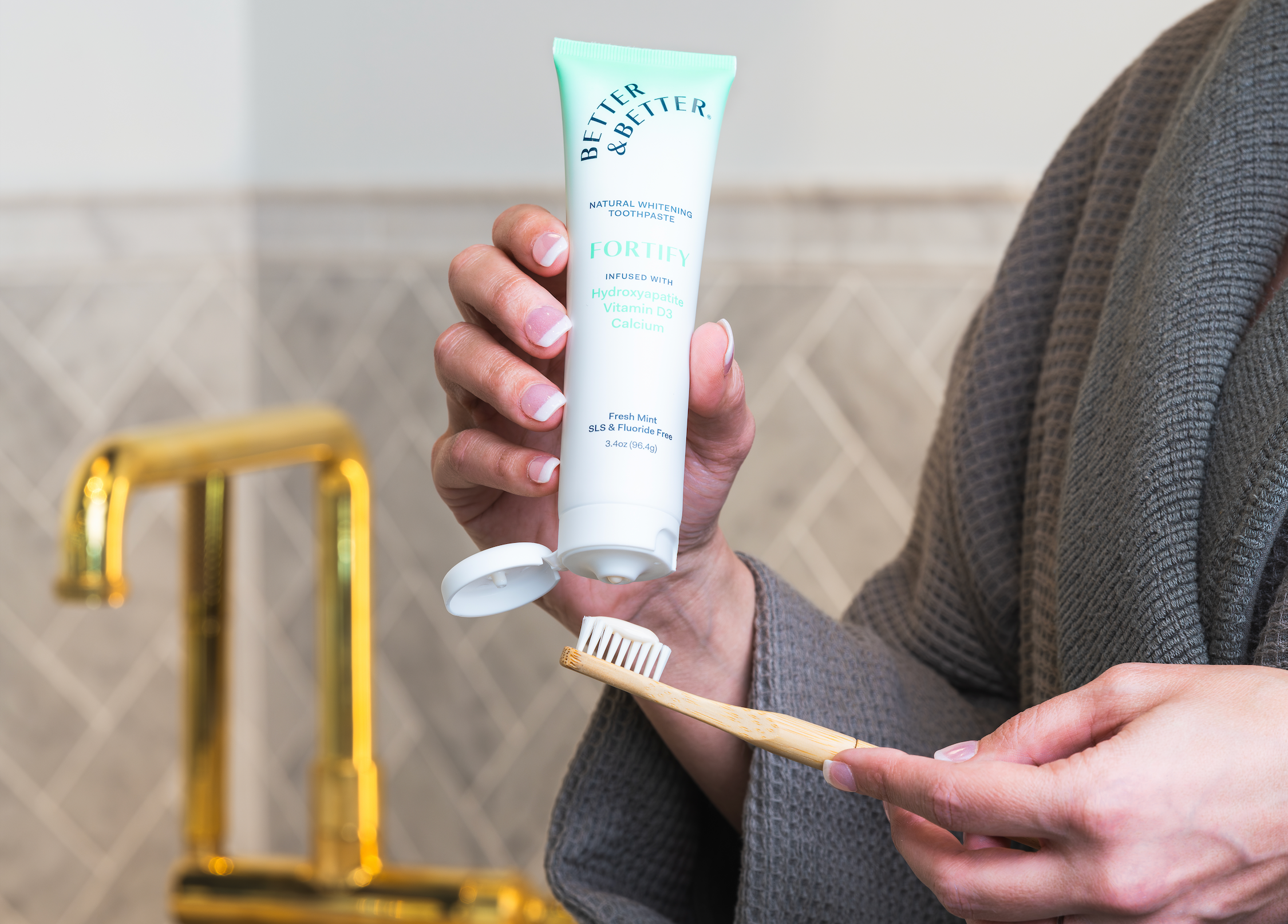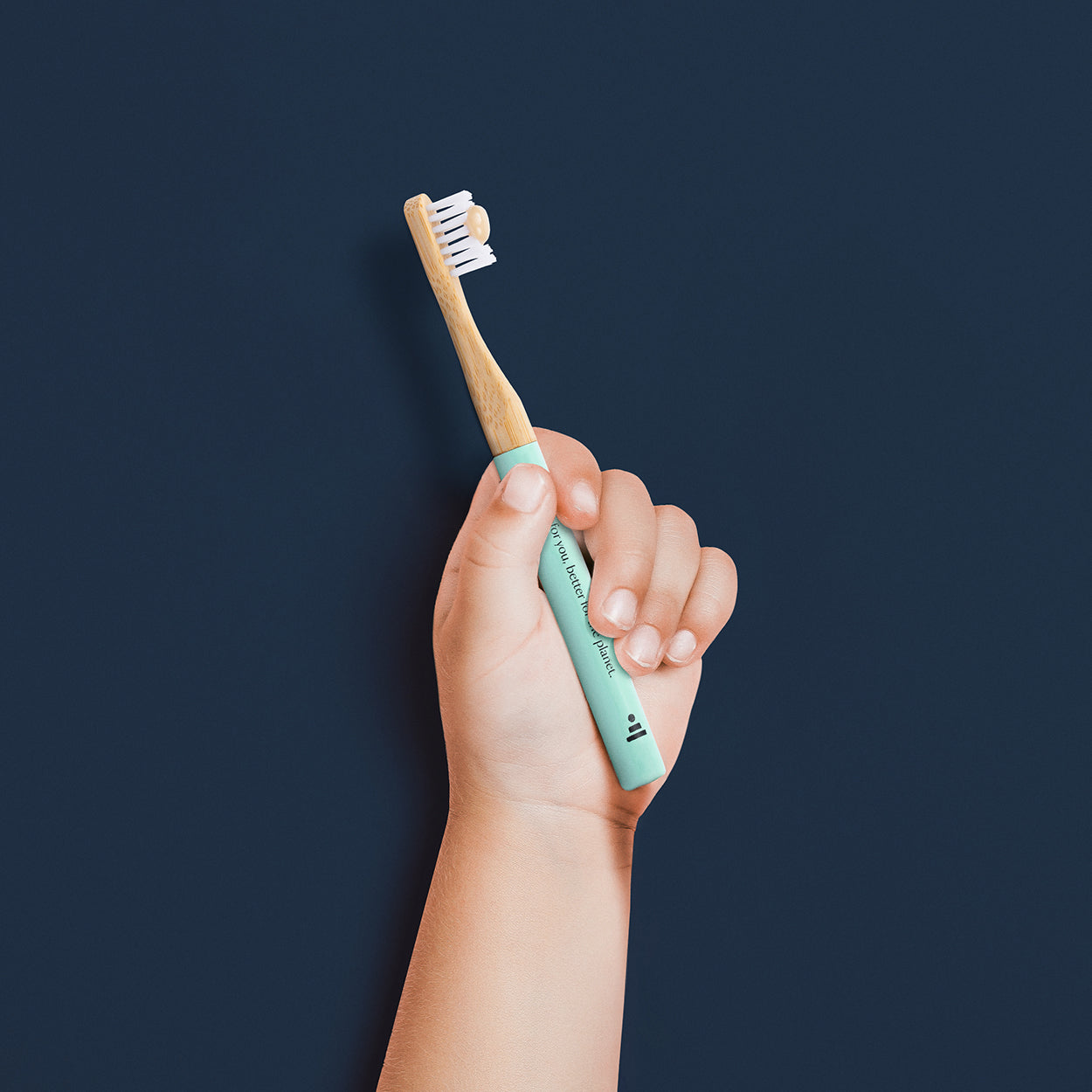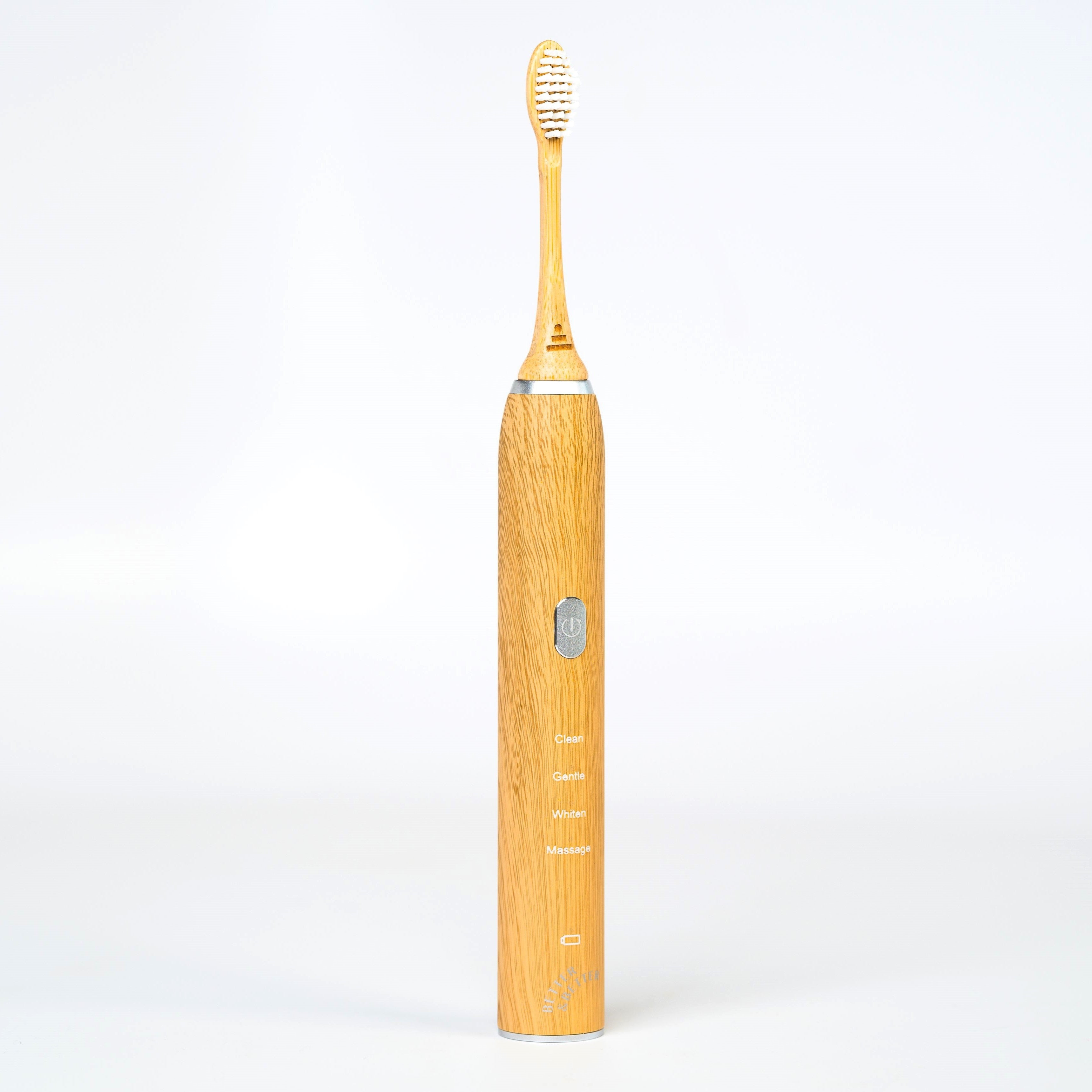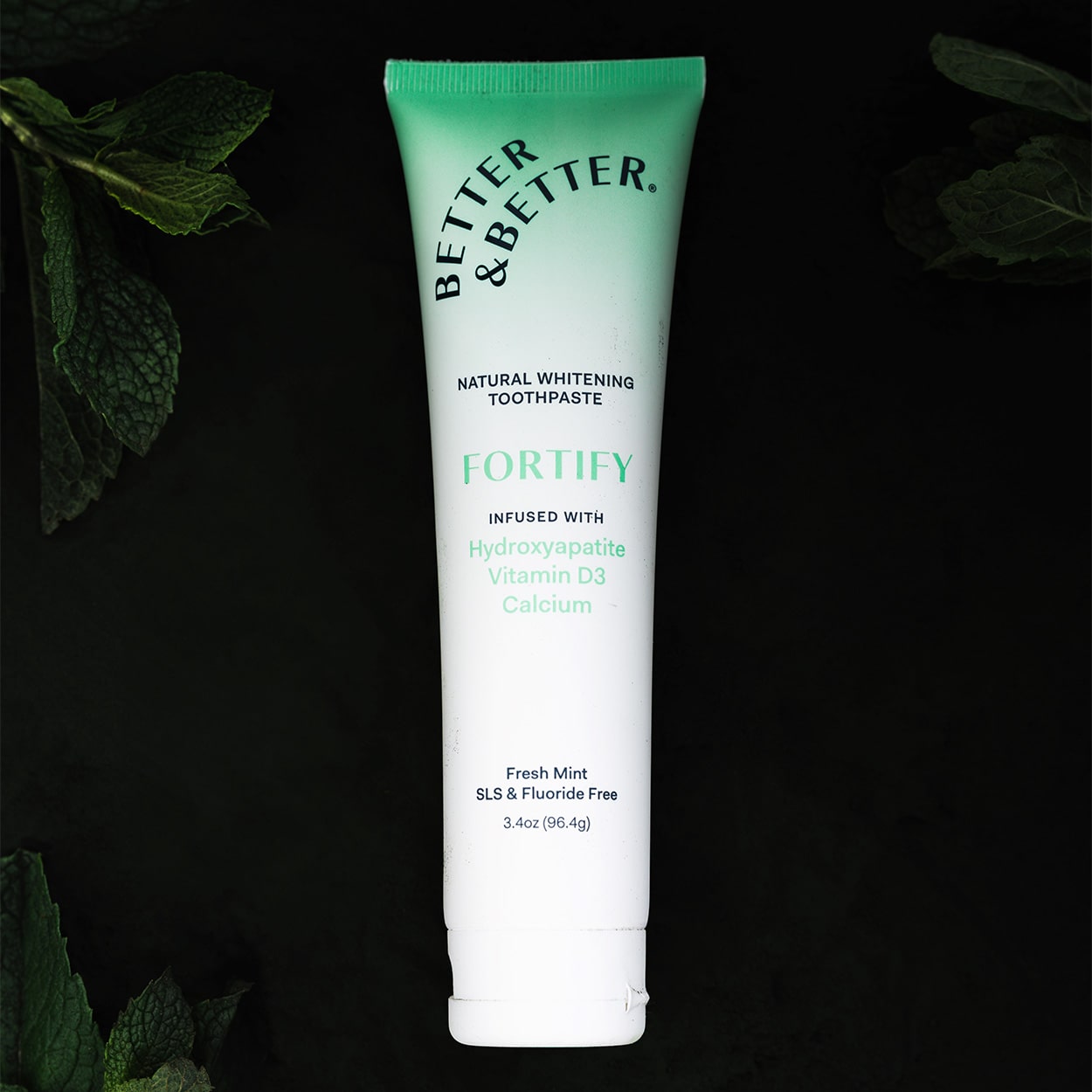Fluoride-free toothpaste is having a moment—and for good reason. More and more people are waking up to the fact that stronger enamel and healthier mouths don’t have to come at the cost of questionable ingredients. So it’s no surprise that hydroxyapatite is finally getting the attention it deserves.
But like most buzzed-about ingredients, hydroxyapatite (or HA) comes in more than one form. And not all of them are created equal.
Specifically, there’s growing debate around micro-hydroxyapatite vs. nano-hydroxyapatite (nHA). Same ingredient, different particle size—and a completely different story when it comes to sourcing, formulation, and safety.
At Better & Better, we chose a naturally derived micro-hydroxyapatite for all our remineralizing toothpastes. Here’s why.
The Basics: What Is Hydroxyapatite Anyway?
Hydroxyapatite is a calcium phosphate mineral that makes up 97% of your tooth enamel and 70% of your dentin. In short: It’s the stuff your teeth are made of.
So it’s not surprising that hydroxyapatite is so effective at restoring and repairing enamel. Because your body already recognizes it, it can seamlessly reintegrate into your teeth—unlike other ingredients that may work on your teeth, but not with them.
- According to a 2019 study published in Nature, hydroxyapatite is just as effective as fluoride in preventing and reversing cavities.
- A 2014 study found that brushing with HA significantly reduced tooth sensitivity, especially to cold air and tactile stimulation.
This enamel-restoring mineral has been used in oral care in Japan and Europe for decades—and with good reason. It’s safe, effective, and biomimetic (AKA your teeth welcome it with open arms).
But while the ingredient itself is powerful, the way it’s made—and the size of its particles—can drastically change its story.
Hydroxyapatite vs. Nano-Hydroxyapatite: 5 Key Differences
When you zoom in (literally), the difference between HA and nHA comes down to particle size.
- Micro-hydroxyapatite (HA): Particle size in microns
- Nano-hydroxyapatite (nHA): Particle size less than 100 nanometers
And that one small detail changes everything—from safety and sourcing to how it behaves in your mouth. Here’s how they stack up:
1. Particle Size
HA = microns. nHA = nanometers.
Nano sounds high-tech (and it is), but smaller isn’t always better. Yes, nHA particles can penetrate enamel microdefects more easily—but they can also potentially cross the blood-brain barrier (BBB) and enter your body more easily, too.
Micro-HA stays on the surface where it belongs, bonding with enamel without slipping past your body’s natural barriers. It does the job—without going overboard.
2. Source & Clean Label
Better & Better’s HA: Derived from natural calcium carbonate, mined from French quarries.
Nano-hydroxyapatite: Always lab-synthesized.
Our mineral-origin HA is exactly that—a mineral. Not a lab-made replica.
While synthetic nHA is chemically engineered to mimic your enamel, our HA is your enamel. It’s nature-made, sustainably sourced, and minimally processed. Just the way we like it.
3. Safety & Regulation
Nano-materials often occupy a regulatory gray area—especially in the EU, where strict cosmetic safety standards apply. There’s an ongoing debate around the potential for nanoparticle absorption or inhalation, especially in aerosolized products (think sprays or powders). While this is less of a concern in toothpaste, it’s still enough to raise eyebrows
Our micro-HA is stable, well-researched, and comfortably outside that gray area. No guesswork. No hand-waving.
4. Trust & Transparency
If you’re reaching for clean-label, minimal-ingredient toothpaste, you probably don’t want to brush your teeth with something that sounds like it belongs in a chemistry lab. Even if nHA is technically safe, it feels like the kind of ingredient that deserves an asterisk.
Our HA? No asterisk needed.
It’s biomimetic, bioavailable, and fully disclosed on every label—because trust isn’t built on vague promises, it’s built on clarity.
5. Efficacy & Texture
Sure, nanoparticles may sneak into enamel defects. But they also require more reactive formulations to stabilize. That means more tweaks to the ingredient list, more potential for irritation, and more trade-offs.
Micro-HA? It still remineralizes, strengthens enamel, and reduces sensitivity, just without the extra formulation baggage. And when it’s sourced and processed properly (like ours is), it has a smooth, non-gritty feel that blends beautifully into your brushing routine.
Why We Chose French-Mined Micro Hydroxyapatite
Let’s recap. Our hydroxyapatite is:
- Naturally derived from French calcium carbonate
- Cruelty-free, vegan-friendly, and non-GMO
- Regulatory-safe with no nano complications
- Perfectly aligned with our clean-label approach
You’ll find it in all three of our enamel-supporting toothpaste formulas:
- Fortify: Our GQ award-winning toothpaste that pairs HA with calcium and vitamin D3.
- Detoxify: For a deeper clean that supports your oral microbiome with added vitamins and minerals.
- Kids Multivitamin Toothpaste: Fluoride-free, watermelon-flavored, and packed with nutrients for tiny teeth.
The Bottom Line: Not All Hydroxyapatite Is the Same
Nano isn’t evil. But it’s not always necessary.
We built our formulas around a source that’s natural, safe, and effective—without cutting corners or complicating things. Because “better” isn’t about chasing trends. It’s about being intentional with every choice we make—from what’s in the tube to what’s left out.
Micro-hydroxyapatite is just one more way we’re making your oral care routine smarter, simpler, and cleaner—one brush at a time. Ready to remineralize the better way? Explore our fluoride-free toothpaste collection.


















